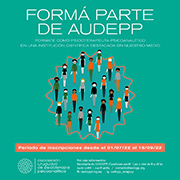REFLEXIONES INVERNALES EN OTOÑO. SOBRE PSICOANÁLISIS DE LOS VÍNCULOS TEMPRANOS
DOI:
https://doi.org/10.53693/ERPPA/3.1.1Palabras clave:
teoría del apego, mentalización, regulación emocional, investigaciónResumen
El trabajo parte de una circunstancia personal en el recorrido profesional y académico del autor. Propone una reflexión sobre un tema sustancial de ese trayecto que implica una manera de concebir lo psíquico basado en lo interpersonal. Examina en perspectiva el impacto de la teoría del apego y señala su valor para los nuevos psicoterapeutas: como clínicos, por la continuidad patológica de los diferentes trastornos, y como agentes de prevención, porque brinda herramientas para la promoción de un desarrollo saludable. La teoría del apego se vincula con la teoría psicoanalítica y con la observación clínica rigurosa, destacando el acercamiento necesario, aunque también resistido, entre ciencia y psicoanálisis.
Descargas
Citas
Baron-Cohen, S., Tager-FlusbSBerg, H. y D. J. Cohen (eds.) (1994). Understanding Other Minds: Perspectives from Autism. Oxford University Press.
Berlin, L. J. y Cass idy, J. (2003). Mothers’ self-reported control their preschool children’s emotional expressiveness: A longitudinal study of associations with infant-mother attachment and children’s emotion regulation. Social Development, 12(4), 477-495. https://doi.org/10.1111/1467-9507.00244
Bowlby, J. (1969). Attachment and loss (vol. 1). Basic Books.
Bowlby, J. (1989). Los orígenes de la teoría del apego. En J. Bowlby, Una base segura. Aplicaciones clínicas de una teoría del apego (pp. 33-52). Paidós.
Bretherton, I. (1987). New perspectives on attachment relations: Security, communication, and internal working models. En J. D. Osofsky (ed.), Handbook of infant development (pp. 1061-1100). Wiley & Sons.
Cherro Aguerre, M. (2000). Work projects toward infant mental health in a child and adolescent psychiatry clinic. En J. D. Osofsky y H. E. Fitzgerald (eds.), WAIMH Handbook of Infant Mental Health (vol. 1). John Wiley & Sons.
Cherro Aguerre, M. (2020). Contrapunto y pico. En S. Puentes de Oyenard (selecc.), Querencias (p. 43). Ediciones Cruz del Sur.
Di Renzo, G. C., Rosari, A., Donati Sarti, R., Cruciani, L. y Cutuli, A. (2007). Does fetal sex affect pregnancy outcome? Gender Medicine, 4(1), 19-30. https://doi.org/10.1016/S1550-8579(07)80004-0
Domes, G., Schulze, L., Bött ger, M., Grossm ann, A., Hauenst ein, K., Wirtz, P., Heinrichs, M. y Herpertz, S. (2010). The neural correlates of sex differences in emotional reactivity and emotion regulation. Human Brain Mapping, 31(5), 758-769. https://onlinelibrary.wiley.com/doi/epdf/10.1002/hbm.20903
Emde, R. N. (1980). Emotional availability: A reciprocal reward system for infants and parents with implications for prevention of psychosocial disorders. En E. Goldson (ed.), Parent infant relationships (pp. 87-115). Grune & Stratton.
Fogass i, L., Ferrari, P., Gesierich, B., Rozzi, S., Chersi, F. y Rizzolatt i, G. (2005). Parietal lobe: From action organization to intention understanding. Science, 308(5722), 662-667. https://www.science.org/doi/10.1126/science.1106138
Fonagy, P. y Target, M. (1997). Attachment and reflective function: Their role in self-organization. Development and Psychopathology, 9(4), 679-700. https://doi.org/10.1017/S0954579497001399
Fonagy, P., Target, M. y Gergely, G. (2000). Attachment and borderline personality disorder: A theory and some evidence. The Psychiatric Clinics of North America, 23(1), 103-122. https://doi.org/10.1016/S0193-953X(05)70146-5
Fraiberg, S., Adelson, E. y Shapiro, V. (1975). Ghost in the nursery. A psychoanalytic approach to the problems of impaired infant-mother relationships. Journal of American Academy of Child Psychiatry, 14(3), 387-421. https://doi.org/10.1016/s0002-7138(09)61442-4
GaffFFan, E. A., Martins, C., Healy, S. y Murray, L. (2010). Early social experience and individual differences in infants’ joint attention. Social Development, 19(2), 369-393. https://doi.org/10.1111/j.1467-9507.2008.00533.x
Gallese, V., Fadiga, L., Fogass i, L. y Rizzolatt i, G. (1996). Action recognition in the premotor cortex. Brain, 119(2), 593-609. https://doi.org/10.1093/brain/119.2.593
Gollwitzer, E. S. y Marsland, B. (2015). Impact of early-life exposures on immune maturation and susceptibility to disease. Trends in Immunology, 36(11), 684-696. https://doi.org/10.1016/j.it.2015.09.009
Gordon, M. (2009). Roots of empathy. The Experiment Publishing.
Hornik, R. y Gunnar, M. R. (1988). A descriptive analysis of infant social referencing. Child Development, 59(3), 626-634.
Iacobini, M. (2009). Imitation, empathy, and mirror neurons. Annual Review of Psychology, 60, 653-670. https://doi.org/10.1146/annurev.psych.60.110707.163604
Klinnert, M., Emde, R. N., Butt erfield, P. y Campos, J. (1986). Social referencing: The infant’s use of emotional signals from a friendly adult with mother present. Developmental Psychology, 22(4), 427-432. https://doi.org/10.1037/0012-1649.22.4.427
Lieberman, A., Padrón, E., Van Horn, P. y Harris, W. (2005). Angels in the nursery: The intergenerational transmission of benevolent parental influences. Infant Mental Health Journal, 26(6), 504-520. https://doi.org/10.1002/imhj.20071
Mundy, P. y Sigman, M. (2006). Joint attention, social competence, and developmental psychopathology. En D. Cicchetti y D. J. Cohen (eds.), Developmental psychopathology: Theory and method (pp. 293-332). John Wiley & Sons.
Mundy, P., Sigman, M. y Kasari, C. (1994). The theory of mind and joint-attention deficits in autism: critical perspecties. En S. Baron-Cohen, H. Tager-Flusberg y D. J. Cohen (eds.), Understanding other Minds: Perspectives from autism (pp. 181-203). Oxford University Press.
Mundy, P., Sullivan, L. y Mast ergeorge, A. M. (2009). A parallel and distributed-processing model of joint attention, social cognition and autism. Autism Research, 2(1), 2-21. https://doi.org/10.1002/aur.61
Noroña-Zhou, A. y Tung, I. (2021). Developmental patterns of emotion regulation in toddlerhood: Examining predictors of change and long-term resilience. Infant Mental Health Journal, 42(1), 5-20. https://doi.org/10.1002/imhj.21877
Papousek, M. (2011). Resilience, strengths, and regulatory capacities: Hidden resources in developmental disorders of infant mental health. Infant Mental Health Journal, 32(1), 29-46. https://doi.org/10.1002/imhj.20282
Riva Crugnola, C., Tamb elli, R., Spinelli, M., Gazzott i, S., Caprin, C. y Albizzati, A. (2011). Attachment patterns and emotion regulation strategies in the second year. Infant Behavior and Development, 34(1), 136-151. https://doi.org/10.1016/j.infbeh.2010.11.002
Rizolatt i, G., Fadiga, L., Gallese, V. y Fogass i, L. (1996). Premotor cortex and the recognition of motor actions. Cognitive Brain Research, 3(2), 131-141. https://doi.org/10.1016/0926-6410(95)00038-0
Schore, A. (2001a). Effects of a secure attachment relationship on right brain development, affect regulation, and infant mental health. Infant Mental Health Journal, 22(1-2), 7-66. https://doi.org/10.1002/1097-0355(200101/04)22:1<7::AID-IMHJ2>3.0.CO;2-N
Schore, A. (2001b). The effects of early relational trauma on right brain development, affect regulation, and infant mental health. Infant Mental Health Journal, 22(1-2), 201-269. https://doi.org/10.1002/1097-0355(200101/04)22:1<201::AID-IMHJ8>3.0.CO;2-9
Schore, A. (2017). All our sons: Developmental neurobiology and neuroendocrinology of boys at risk, Infant Mental Health Journal, 38(1), 15-52. https://doi.org/10.1002/imhj.21616
Trevarthen, C. (1998). The concept and foundations of infant intersubjectivity. En S. Braten (ed.), Intersubjective communication and emotion in early ontogeny (pp. 15-46). University Press.
Vallott on, C. (2011). Babies open our minds to their minds: How «listening» to infant signs complements and extends our knowledge of infants and their development. Infant Mental Health Journal, 32(1), 115-133. https://doi.org/10.1002/imhj.20286
Vaughan Van Heck e A., Mundy, P. C., Acra, F., Block , J., Delgado, C. E. F., Parlade, M., Meyer, J., Neal, R. y Pomares, Y. (2007). Infant joint attention, temperament, and social competence in preschool children. Child Development, 78(1), 53-69. https://doi.org/10.1111/j.1467-8624.2007.00985.x
Winnicott , D. W. (1969a). L’angoisse associée a l’insécurité. En De la pédiatrie à la psychanalyse (pp. 126-130). Petite Bibliothèque Payot.
Winnicott , D. W. (1969b). La capacité d’être seul. En De la pédiatrie à la psychanalyse (pp. 205-213). Petite Bibliothèque Payot.
Winnicott , D. W. (1969c). La préocupation maternelle primaire. En De la pédiatrie à la psychanalyse (pp. 168-174). Petite Bibliothèque Payot.
Winnicott , D. W. (1971). La consultation thérapeutique et l’enfant. Éditions Gallimard.
Winnicott , D. W. (1972a). Papel de espejo de la madre y la familia en el desarrollo del niño. En D. W. Winnicott, Realidad y juego (pp. 147-155). Granica.
Winnicott , D. W. (1972b). Realidad y juego. Granica.
Winnicott , D. W. (1974a). Intégration du moi au cours du développement de l’enfant. En Processus de maturation chez l’enfant (pp. 9-18). Petite Bibliothèque Payot.
Winnicott , D. W. (1974b). La préocupation maternelle primaire. De la pédiatrie à la psychanalyse (pp. 9-18). Petite Bibliothèque Payot.










